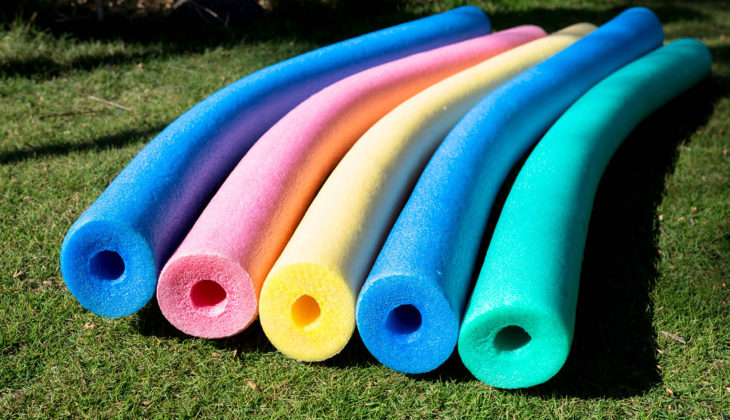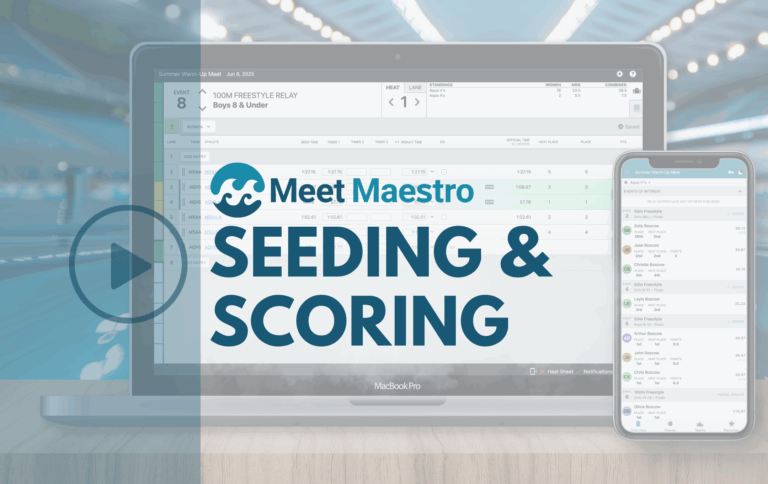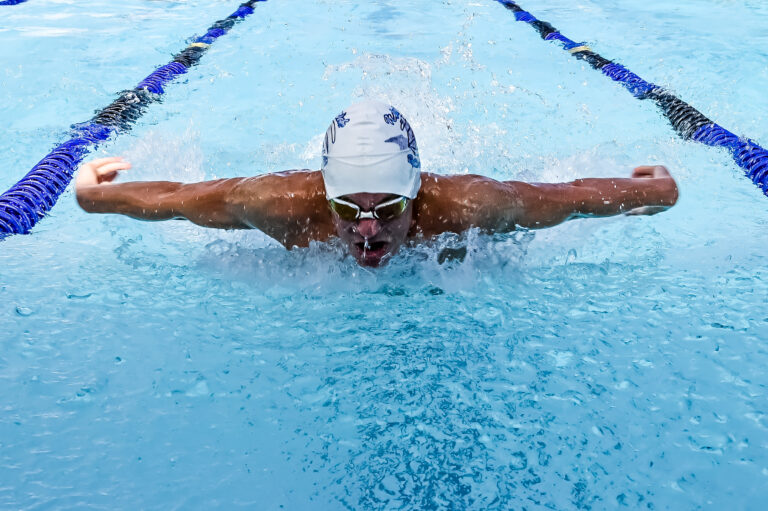Photo: Colorful Pool Noodles by Marco Verch under CC 2.0
If you’re new to swimming you might be unsure about what swim gear and accessories your kids need. What’s it for? Which kind to buy? What’s the best way to use it? Each team or coach has different requirements, so check with your team about what your kids need—but here are some swim equipment basics.
Swim Equipment Basics:
Goggles

What they’re for: keeping water out of the eyes (duh).
How to use them: The straps should go directly around the head in line with the eye area. Don’t pull the straps down around the base of the scull, have them too high, or put them over the ears.
How to choose them: Every decent pair of goggles easily come out of the packaging, always try them on BEFORE buying! They need to fit the swimmer’s face. Ensure they feel suction around the eyes when the goggles are pressed to the eye sockets. Leave them on for a minute and turn from side to side, make sure there is no air moving into the goggles, in the pool this will be water coming in! Goggles that have an adjustable nosepiece are helpful for correct fit. Mirrored lenses block the sun’s glare, helpful for outdoor swimming.
Other tips: Goggles should not need to be super tight to keep the water out. They should be worn as loosely as possible for comfort. If goggles are leaking and you have tried tightening them and adjusting the nosepiece to no effect, throw them away and try another pair! They will not magically start fitting better! See another of our handy blogs for tips on keeping goggles in place during a dive.
Goggle Anti-fog

What it’s for: anti-fog coated goggles don’t usually work. Using a goggle anti-fog solution keeps goggles clear all practice long.
How to use it: rub a small amount of the solution on each of the goggle’s lenses, rinse it off in the pool before wear. One application should last all session.
How to choose it: the tried and true swimmer formula is to use a mix of one part baby shampoo (no tears), with two parts water. Get a small squeeze bottle and mix your own. Viola! You’re in business.
Swim Cap

What it’s for: to keep hair out of the eyes and face and to make the swimmer more streamlined.
How to use it: hold the center fold of the cap in the middle of the forehead and pull the cap from the front of the head to the back (the fold is not meant to go ear-to-ear, but little kids sure look cute with it that way!). Swimmers with long hair should put it in a low pony tail first then wind their hair into a bun and tuck it into the cap, keeping the bulk of their hair closer to the base of the head rather than the top.
How to choose it: your team likely has a team cap but they might give you a choice between silicon and latex. Silicon caps generally last longer and are more comfortable (they don’t pull the hair). They are also warmer. If it gets too hot try a latex cap. Latex are perfectly good, and are cheaper. Dry them out after use and keep them flat to make them last longer.
Kickboard
 What it’s for: to isolate the legs for focusing on strengthening the kick.
What it’s for: to isolate the legs for focusing on strengthening the kick.
How to use it: New swimmers should hold it with two hands at the bottom (flat) end of the board. This way they can use it with their head down in the water between breathing, making it easier to kick with feet at the surface. Experienced swimmers hold it at the rounded end, laying their arms over the top of the board, and they typically kick with their head out at all times.
How to choose it: all kickboards are pretty much created equal, smaller swimmers should have smaller boards.
Fins
What they’re for: strengthening the legs, improving foot flexibility, correcting kicking technique, helping with propulsion during drills, fun (because they make you go fast).
How to use them: put them on and go! For kick sets, swimming or drilling.
How to choose them: there are many different types and lengths. Swim fins are typically two-tone rubber (as opposed to snorkeling/diving fins). Longer fins are more common, the shorter version, known as “zoomers” offer less propulsion and more weight. Try them on before wearing to ensure good fit. When kids find themselves between sizes fins can rub and cause blisters, if this is the case try wearing socks under them!
Pictured: Kiefer Signature Swim Fins
Mesh Gear Bag
What it’s for: carrying swim gear in an easy, portable way that allows it to dry quickly.
How to use it: Some people try to put all their swim gear in there, including their towel and a dry change of clothes, this isn’t really what they are for. The point is to keep all training gear (what is listed above) in this bag and just drop it at the side of the pool to pull things out of as their needed. It gets wet. Keep a separate bag for towels and things that need to stay dry.
How to choose it: for the above reasons don’t bother getting anything fancy, a simple mesh bag with a draw string top is all that’s needed.
Pictured: Speedo Ventilator Mesh Bag
Sunscreen

What it’s for: when doing laps swim shirts can be heavy and restrictive. Sun protection is essential, but for 30 minutes to 1 hour of lap swimming sunscreen is the best choice. Swim shirts are for before and after practice and anytime kids are poolside playing.
How to use it: liberally! Apply 30 mins before getting in so it doesn’t immediately wash off.
Check out this resource on sunburn safety.



